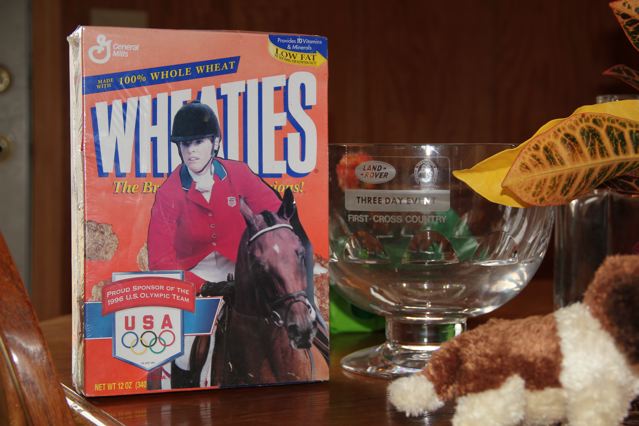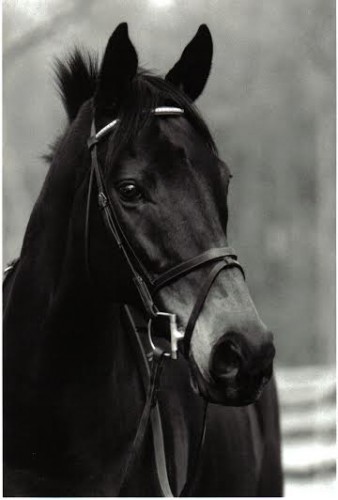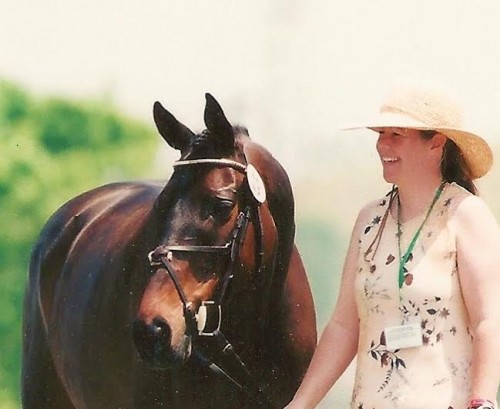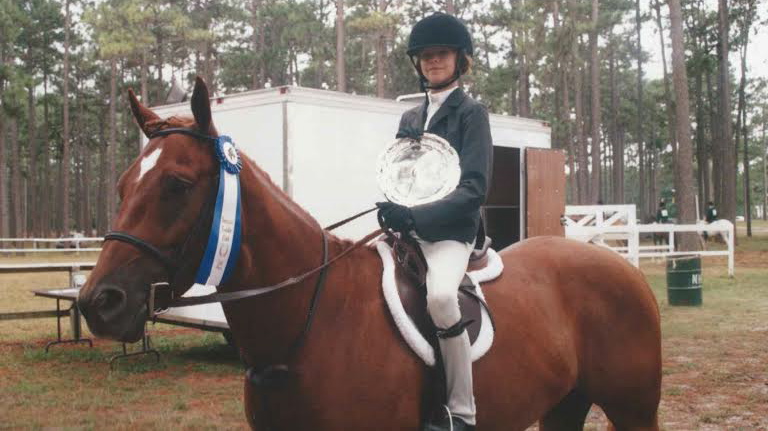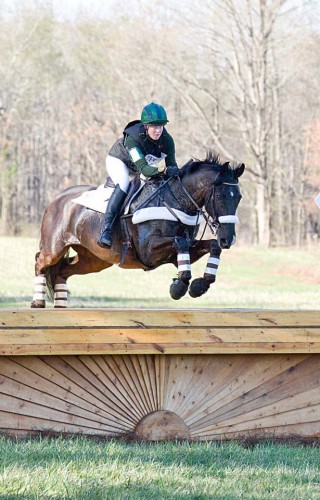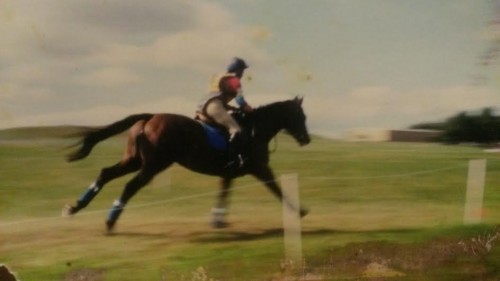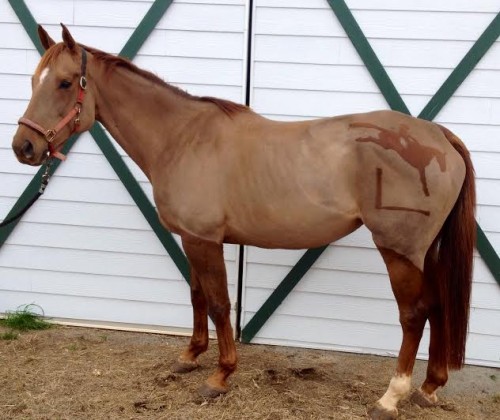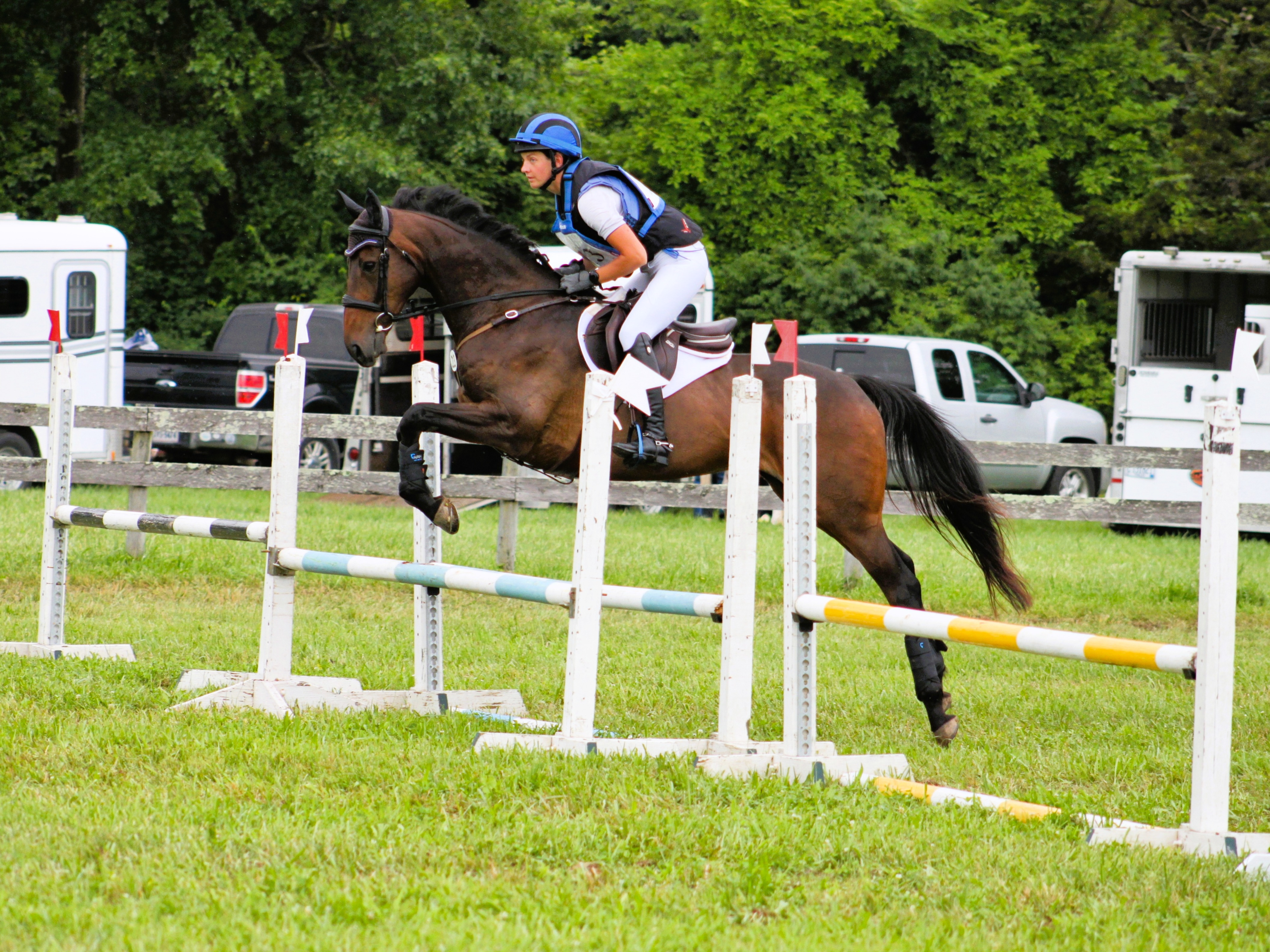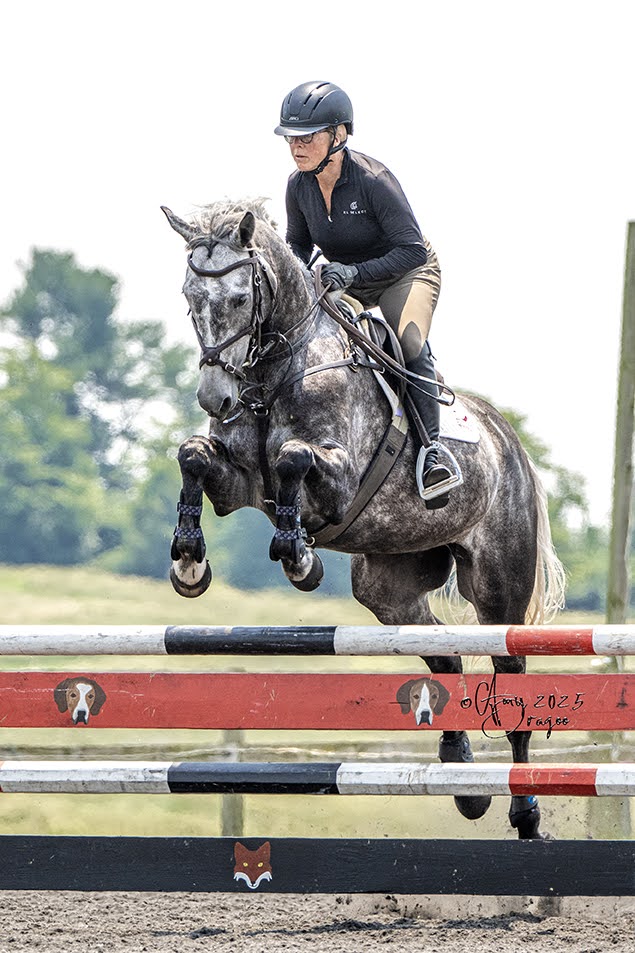
Nyls at Plantation CIC3*. Photo by Jenni Autry
There’s a scene in one of my favorite movies, Forgetting Sarah Marshall, where a surfing instructor is attempting to teach a first timer how to pop up from the position where he lies on his belly into the surfing balance on his feet. The scene is ridiculous for a number of reasons, but the basic one is that the teacher is positively terrible at explaining what he wants from his student, Peter. As Peter pops up from lying down to standing up, Kunu (the instructor) says, “Don’t do anything. Don’t try to surf, don’t do it! The less you do, the more you do”. Attempting to pop up again, Kunu says, “That’s not it at all. Do less. Get down, try it again”.
As absurd as the scene is, I feel like a lot of riding is exactly like this situation. We spend our whole lives trying to achieve results without looking like we are doing anything at all. If you watch the best riders in any discipline, whether it’s Dressage, Show Jumping or Eventing, they tend to almost look like they’re doing nothing. They have bottled the essence of effortlessness and they drink it for breakfast with their Wheaties.
I have a student who is just beginning her exploration into the world of Eventing, and has ridden in the Hunter arena before this. She has a cute young thoroughbred who’s a great jumper, and a patient boy with lots of potential. The two hardest things that she’s struggling with right now are the concept of consistent but light contact, and the strength to sit down and back in the canter and resist the urge to hover above the saddle. I was explaining to her the other day that both of these things will take time, but the ultimate goal is to look like she’s not doing anything, but simply sitting in perfect balance and coexisting with her horse, achieving results effortlessly and invisibly. You can bet I got an exasperated look for that.

Leo being adorable. Photo by Samantha Brooke Photography.
Of course the ultimate goal is to be able to seamlessly accomplish whatever movement, obstacle or pattern you want from your horse without the audience noticing what cues you are using. The logic behind this, for me at least, is that I want to be as kind and subtle with my cues as possible in order to communicate on a better level. If a horse can feel one fly sitting on his flank, you think he can’t feel when you apply your leg an inch further back than usual? Horses are trained through the application and release of pressure, be it in the reins, the seat bones, the legs or what have you. I feel that the goal with each horse is to come to an understanding where the pressure applied can be much less, and everyone leaves happier.
However, here is where I think people go wrong with this idea: in order to achieve this “doing less”, you can’t do nothing. You can’t passively ride your horse with little to no aids and hope that he’ll come around eventually. You also can’t simply hang on his mouth and hope he will soften before you do. You can’t avoid all arguments and focus on being nice all the time. If you do, you are effectively training your horse to walk all over you, and slowly ignore your aids.
Within this concept of “doing less” and working towards a subtler, nicer form of communication, there is a time for discipline, but with empathy. Nobody wants to hear about discipline, but the fact of the matter is that it’s not inherently evil, just the same as bigger bits or draw reins or spurs are not inherently evil. The only thing that makes these tools aggressive is the user, and how they choose to implement them. The part that is important in this is empathy, and never temper I would rather correct a behavior once with a little more authority, than nag incessantly for months, numbing the horse to your aids. Check out George Morris’ approach to horsemanship in the video for more thoughts on this.
In short, I think it’s important that as riders we realize our impact on our horses and live more intentionally while we are on their backs. Every time you interact with him, you are training him for something, even if you don’t mean to do so. As the horse is a highly social animal, you must first start to enter his social structure as a person who can be trusted and respected. Once you achieve this, you must then begin to understand that each ride can be geared towards finding that essence of effortlessness, and bottling your own jug for breakfast.







